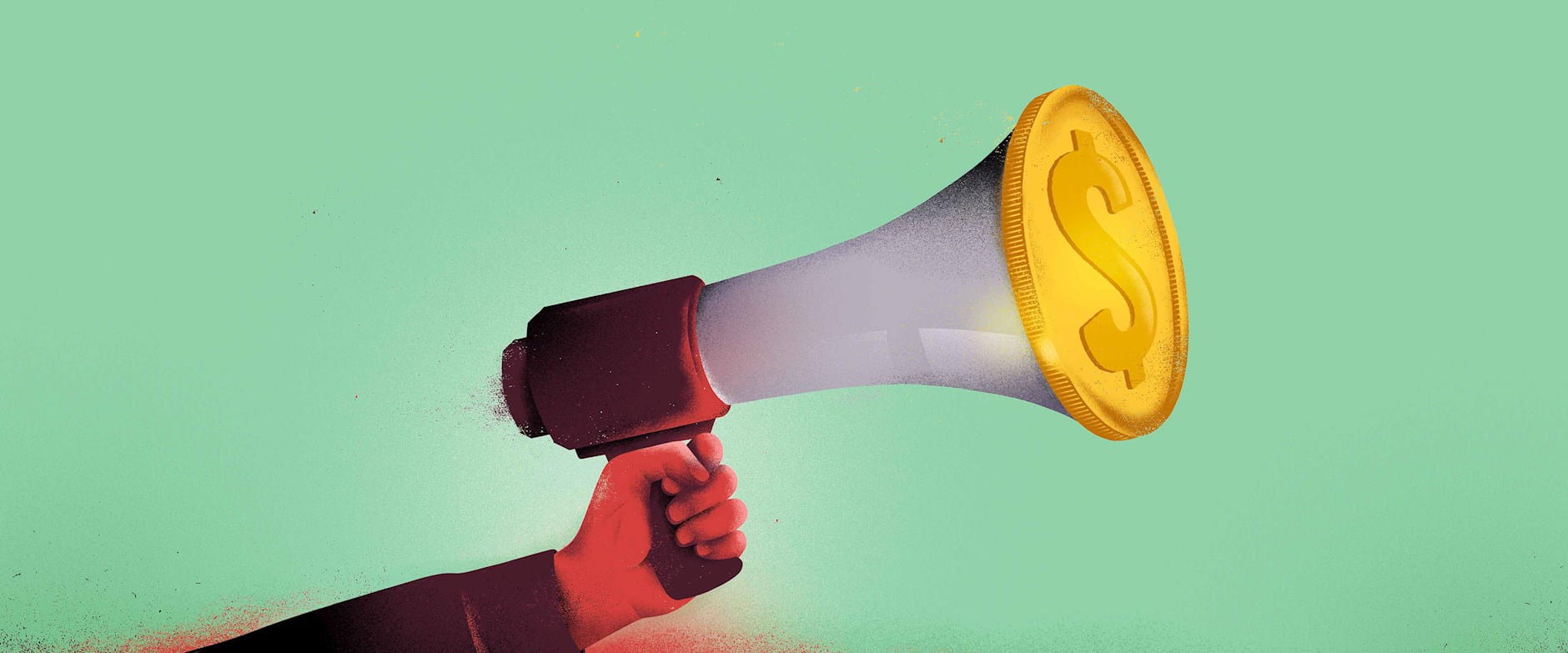Charity campaigns live and die on publicity, and many of the organizations running them leverage social influence in order to bring in donations. That’s why, if you’ve ever given to a cause, you may have been nudged to wear a sticker or a T-shirt or to post a hashtag on social media afterward.
If this made you uncomfortable, you’re not alone. Advertising a selfless act creates a conundrum: you may want people to know about your good deed, and the beneficiary, yet don’t want to come across as a braggart. For many donors, charitable giving is less potent when it’s publicized.
Organizations can defuse this tension by making publicity a requirement rather than just a nudge, according to National University of Singapore’s Adelle X. Yang (a graduate of Booth’s PhD Program) and Chicago Booth’s Christopher K. Hsee. Through a series of experiments, the researchers find that the “voluntary publicity” strategy that many charities use may actually backfire, as benefactors don’t want anyone to assume that they have “impure” motives related to image, rather than “pure,” altruistic ones.
“As a result, numerous charity campaigns fail to drive up social contributions or social awareness despite adopting and encouraging the use of self-promotion devices,” Yang and Hsee write. Counterintuitively, they find that an “obligatory publicity” strategy, in which a donor is required to publicize a gift, may be more effective at drumming up donations and ensuring sufficient publicity to sustain fundraising momentum.
In their study, the researchers pitted the two publicity approaches against each other. In one experiment, they sent emails to students at several schools within the National University of Singapore, inviting them to participate in an upcoming campus blood drive. But there was a minor difference in the emails: about half the participants read that receiving a promotional hand stamp was required as part of the donation (obligatory publicity), while the other half read that it was simply an option (voluntary publicity). The emails were supplemented with physical posters displaying the same information in locations where the respective groups of students were most likely to see them.
Make them flaunt it
When people were required to get a promotional hand stamp after giving blood, they were more likely to donate than people for whom stamps were optional.
Over the three-day blood drive, although the baseline donation rate from the previous year was about 0.2 percent per day, students in the obligatory condition were more than twice as likely to donate blood than those in the voluntary condition, at roughly 0.4 percent versus 0.2 percent. That the donation rate of the voluntary group matched that of the generic blood drive the previous year suggests making publicity mandatory really did affect donation behavior, Yang and Hsee say. They argue that obligatory publicity removes people’s fear of coming off as self-promotional because it places the decision outside a person’s control. “We suggest that obligatory publicity resolves the tension between pure and impure motives for charitable acts,” they write, “and offers a more effective strategy to promote charitable acts in public.”
In the same experiment, the researchers find that not only were participants in the obligatory group more likely to donate blood, but so were their friends who were not part of the experiment, suggesting obligatory publicity may generate a ripple effect through social networks. This could be because donors in the obligatory-publicity campaign were more comfortable displaying and discussing their stamp, which led them to recruit more friends, Yang and Hsee argue.
Other experiments using different charitable acts or hypothetical amounts of money also demonstrate that obligatory publicity tends to be more effective than the voluntary form.
However, the effect may not work if you think your peers don’t care about your giving behavior—or if the amount involved is on the low side, according to two final experiments. In one, telling participants that hypothetical peers weren’t concerned about tokens of charitable behavior diminished the effect. In the other, setting the bar at just $5 turned people off, compared with requiring publicity for $48 donations. The findings suggest that people are indeed sensitive to others’ perceptions, and they don’t expect a “cheap donation” to earn them a good reputation.
“The implications of this research are not limited to the marketing of charity campaigns,” the researchers write. “The conflict between genuine prosocial intentions and social image motives permeates numerous social phenomena, including interpersonal helping, cooperation, organizational citizenship, social enterprise, and cause-related marketing.”
People whose job is to drive selfless behavior in any form may want to keep the obligatory-publicity effect in mind. Whether encouraging large charitable donations or just good citizenship at work, organizations may be wise to take the onus off the individual and simply require publicizing good behavior.
Adelle X. Yang and Christopher K. Hsee, “Obligatory Publicity Increases Charitable Acts,” Journal of Consumer Research, February 2022.
Your Privacy
We want to demonstrate our commitment to your privacy. Please review Chicago Booth's privacy notice, which provides information explaining how and why we collect particular information when you visit our website.
